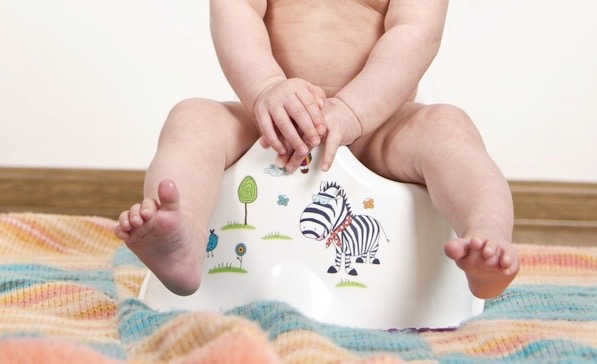Change Management Lessons from Potty Training
My youngest is about to turn one-and-a-half years old so that I am getting ready for the third round of potty training. My mother would say ‘if a child is not potty trained by 2 years old, the parents were lazy’.
If children aren’t potty trained by the age of 2, the parents were lazy.
My Mother
Now hold on. Don’t get angry about this comment. We all know there are differences for every child, parent child dynamic and let’s be honest who cares when someone was potty trained. For us, however, this timing worked. Baby seems to be on a good track as well. She’s been having her first successes with the potty and seems very interested in using it, too.
With potty training, I didn’t expect my babies to be ready from one day to the next. It is a process that takes time. I can’t help but think of change management when I think about potty training. Therefore, this post will be another post for my series ‘Motherhood – Your Complimentary Management Training‘. My way of showing mommas out there that they all have management skills and capabilities, even if they are ‘just’ home economists/stay-at-home moms.
How to potty train
So, where do you even start with potty training? How do you explain to your toddler that the method that’s been working for them (i.e. wearing diapers) since they’ve been born, their whole 1-2 years of life, is now apparently not good anymore and that they have to change? Not easy, is it?
Step 1: Introduce the potty
The obvious first step is of course to get a potty. Nowadays there are so many different versions. From the original normal potty, you can now find it with a handle, as miniature toilets, transformed into a race car or whole play stations. All in the hopes of making the transition easier? Or just another marketing to make you spend more money than necessary.
We just got a normal plain version like the potty from Baby Bjorn. I liked it for its plain design and how easy the surface was to clean. Even with the 3rd baby it still looks brand new.
Once you have your potty, let your toddler explore it. (Always make sure it is clean of course.) Let your toddler sit on it with clothes. Maybe read them a book while they are sitting on the potty – with or without clothes. This way they will start feeling comfortable with this new object in the house.
Step 2: Learning by observing
When Globy got to the age that we wanted to start to potty train her we had one or two books that told the stories of a little bear and a little boy learning how to use the potty. I think that seeing the potty in both her books and the house as well as the process, helped her to learn about the concept of going to the potty.
Both Shibi and Baby seemed to take to the potty faster and easier than her older sister. We also read books to them but I often wonder if this was because they saw their older sister(s) do it. There is something about seeing their sisters and friends do it rather than just mom and dad.
Step 3: The first time
The most difficult step might be to get them to actually pee or poo into the potty for the first time. There are various techniques I have heard from my own and other mommas over the years.
Try consistency: Every morning right after they get out of bed, sit them on the potty. Or every night before taking a bath, sit them on the potty. They will not want to sit still as they don’t get the purpose. Why should I be sitting here when I can just run around? Try to keep them on there for a few minutes though. Reading a book with them might help to keep them there.
Try xxx: Some people let their toddlers run around without a diaper and try to catch the moment they have to go. Then it’s about rushing them to the potty to not create a mess. If you don’t make it in time, it’s of course annoying to have to clean it up but it helps to make the kids realize what is going on.
Try acting on their cues: I am pretty sure by toddler age you can tell when they have to do a No 2. Try observing them and get them to do the potty when it is time. It’s possible that the act of taking down their pants and diaper will stop the process but it can also work to get them to do it in the potty.
For us, it was a mix of all of the above for the first successes. Then it became about consistency.
Step 4: Establish the routine
There are stories of kids who decided to use the potty from one day to the other and didn’t need their diaper anymore. If this is true that is great for the parents. In most cases and when they are between 1-2 years old, I believe it takes parents’ effort to potty train them.
After toddlers have done it in the potty a few times, try to make it a routine. Find moments during the day you always take them to the potty. E.g. after breakfast, lunch and dinner. Every time before you leave the house. Every two hours. 15-30 minutes after they had a meal or drink.
There are again different ways to go about it. Find the one that fits you and your toddler best. The consistency and routine will eventually lead to them peeing and pooing into the potty more regularly.
Step 5: Own initiative
From keeping a diaper dry the whole day with your help you then want to teach them to communicate when they have to go. I would always talk to them about what is happening when they went to the potty. Name the things and repeat the message ;when you have to, tell me so we can go”. Even when they would do it in the diaper I would say Oh you did No 1 or 2. Next time, let’s try to go to the potty. Tell me before so we can go.’
I think it’s very important that the message is always encouraging and factual. Pee and poo is something everyone does therefore it’s normal.
Step 6: Final steps
Congratulations if you have managed to transition your toddler to only using the potty during the day.
When is it time to not use a diaper during the day? In the beginning, we’d try diaper free only at home and still use one when going outside. When it consistently goes well, we’d try diaper free when going out for the day with very planned/consisten toilet breaks. During those moments I sometimes wished the diaper back. Bring extra clothes in case an accident happens. It’s part of the process and not a problem.
It’s basically the same with the diaper at night. Make sure to take them to the potty before they fall asleep. Limit water intake if necessary. Observe how often the diaper stays dry during the night. Congratulate them on it. One day, you just have to try. It might go well for a month and all of a sudden there will be an accident. That’s again just part of the problem. Make sure to have a mattress cover and a new sheet and pyjamas ready. It’s of course annoying but hopefully will only happen a few times.
Apparently changing life circumstances can also lead to kids all of a sudden not being able to hold their pee during the night anymore. I haven’t had this situation yet but wouldn’t shy from using diapers again then.
Last step is the move from the potty to the toilet. My kids loved going to the toilet. Maybe from seeing us do it? Especially my second loved playing going to the toilet. She’d ask to be lifted on to it, then wanted to use toilet paper and flush. For this step, the industry will again try to convince you that you need a huge variety of help. From the small toilet seat, to ladder like installations. We didn’t use any of these. I would lift them on to the toilet, hold them when they were still a bit small and scared. At 2.5 years old, Shibi would go to the toilet all by herself.
Now what does that have to do with Change Management in a business sense? Let us take a look.
What is Change Management?
“Change management is a systematic approach to dealing with the transition or transformation of an organization’s goals, processes and technologies. The purpose of change management is to implement strategies for effecting and controlling change and helping people to adapt to change.” (TechTarget, retrieved June 9th, 2024)
“Change management (CM) is a collective term for all approaches to prepare, support, and help individuals, teams, and organizations in making organizational change.” (Wikipedia, retrieved June 9th, 2024)
The 8 Steps Model by John Kotter
John Kotter is one of the thought leaders in the field of leadership and change. Through decades of research of leaders and organization he came up with the framework of ‘8 steps for leading change’.
The 8 steps for leading change are:
- Create A Sense of Urgency
- Build A Guiding Coalition
- Form A Strategic Vision
- Enlist A Volunteer Army
- Enable Action By Removing Barriers
- Generate Short-Term Wins
- Sustain Acceleration
- Institute Change
Finding Change Management Lessons in Potty Training
Can you map the steps you took your toddlers through for potty training to the 8 steps for leading change? Let’s do it together.
| Step | Change Management | Potty Training |
| Create A Sense of Urgency | Inspire people to act – with passion and purpose – to achieve a bold, aspirational opportunity. Build momentum that excites people to pursue a compelling (and clear) vision of the future… together. | Get your toddler excited about the potty – their new ‘toy’ and object that is only for them. Let them play with it and get used to it. |
| Build A Guiding Coalition | A volunteer network needs a coalition of committed people – born of its own ranks – to guide it, coordinate it, and communicate its activities. | Not every step is that clear between leading change and potty training. For steps 2 and 3, I am thinking of reading books that will show your toddler the process, the items and how others do it, too. |
| Form A Strategic Vision | Clarify how the future will be different from the past and get buy-in for how you can make that future a reality through initiatives linked directly to the vision. | Stories show them how the future will be different from the past. Children in the books are usually depicted happy and proud when they transitionfrom diaper to potty. |
| Enlist A Volunteer Army | Large-scale change can only occur when massive numbers of people rally around a common opportunity. At an individual level, they must want to actively contribute. Collectively, they must be unified in the pursuit of achieving the goal together. | As mentioned above, when there are older siblings around, the younger ones might be more motivated to follow what they are doing. The orientation towards their reference group (siblings or friends in kindergarten) starts to happen early and can help with this one. |
| Enable Action By Removing Barriers | Remove the obstacles that slow things down or create roadblocks to progress. Clear the way for people to innovate, work more nimbly across silos, and generate impact quickly. | Think about where to best place the potty. In the bathroom or the middle of the living room? Let them run without diapers to make it easier to achieve a success than when you still have to pull down pants and diapers and might either miss the moment or stop the process. If the funky potty with a steering wheel is more enticing to your child, think about getting it. |
| Generate Short-Term Wins | Wins are the molecules of results. They must be recognized, collected, and communicated – early and often – to track progress and energize volunteers to persist. | Every time time your toddler makes it to potty in the beginning make it a big deal. Celebrate this little success. Make them aware of their achievement and of what is going on. |
| Sustain Acceleration | Press harder after the first successes. Your increasing credibility can improve systems, structures and policies. Be relentless with initiating change after change until the vision is a reality. | Don’t put pressure on your child but work with consistency. This will show them that this new process is here to stay and wasn’t just a one time amusement. Show them you are serious about the use of this potty. |
| Institute Change | Articulate the connections between new behaviors and organizational success, making sure they continue until they become strong enough to replace old habits. Evaluate systems and processes to ensure management practices reinforce the new behaviors, mindsets, and ways of working you invested in. | Start using the potty and toilet everywhere, not just in your home. Talk to your kindergarten teachers about when they will introduce potty training and see if you can align it. The more your toddler will see the new process everywhere in their lives the quicker they will get used to and adapt to it. |
The same way, that you don’t expect your toddler to change from using diapers to going to the potty from one day to the next, you should approach your employees with changes. Depending on whether a change is of bigger or smaller nature you will follow these steps more or less.
Recommended Readings on Change Management
We are living in a world of rapid change. These days, change really seems to be the only constant. At work, I am facing three changes at the moment: a change in senior manager, a change in business unit and executive and possibly a merger with another company.
As much as I have to lead my team through these changes, I also have to make sure that I am dealing with the changes. Besides changes at work, you might also have changes in your private life. Kids getting older and changing kindergarten or school, possibly a move to a bigger house. It all comes with its own benefits and challenges.
To be able to better handle challenges I started reading about change management. Here are some of my favorites:
- Leading Change, Kotter, John P.
- Who moved my cheese? Dr. Spencer Johnson
- HBR’s 10 must reads on Change Management
Conclusion
If you have potty trained a child, you know how to manage change. You know it takes patience, it takes resilience, it takes explanations, it takes demonstrations, it takes celebration and a lot more to get someone to change from a known behavior to accepting a new one.
Remember that toddlers and your employees and colleagues at work are all just human beings. Therefore, the steps are similar which obviously the terminology etc. are somewhat different.






